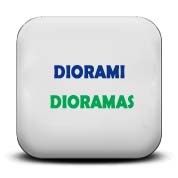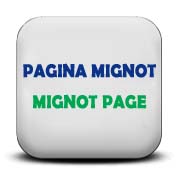









 |
 |
 |
 |
 |
 |
|
 |
 |
 |
 |
| GENERALITA' IL MONDO DEI FIGURINI PIATTI
I figurini piatti sono stati molto popolari specialmente in Germania da fine ottocento e nella prima metà del novecento . Le figure piatte, dette brevemente "piatti" in italiano, in Germania sono chiamate "Kultur-Historische Zinnfiguren" o "Flachfiguren" o, genericamente, "Zinnfiguren"; in Inghilterra/USA "Flats"; in Francia "Figurines plat d'Útain". Le figure prodotte nei primi tempi erano destinate a gioco per i bambini e quindi erano piuttosto rozze sia come proporzioni che come veridicitÓ storica. Con l'inizio del Novecento i produttori si accorsero che il mercato era quello degli adulti che cominciavano ad utilizzare i figurini in diorami di ricostruzioni di battaglie per musei o per proprie collezioni. I figurini diventavano sempre più dettagliati e con
ricostruzioni di costumi ed
uniformi sempre più perfette. A questa più seria
ricerca storica si unì anche la
abilità di disegnatori ed incisori di grande talento per cui
si ebbero dei veri piccoli
capolavori. Attualmente vengono ancora prodotte figure piatte, ma, a mio giudizio, le incisioni più belle sono state realizzate negli anni 1920-1960 ad opera di artisti come Frank, Mohr, Frauendorf, Maier, Lecke, ecc. Il bello del mondo dei "piatti" è che i vari produttori hanno messo in circolazione pezzi che ricoprono praticamente ogni periodo storico, dalla preistoria ai giorni nostri, sia con soggetti militari che civili. Pertanto è possibile per il collezionista concentrare le sue ricerche su un periodo o una Nazione particolare, oppure crearsi una panoramica completa di tutta la storia dell’umanità. Il tutto senza invadere grandi spazi nella casa e questo è un grande vantaggio rispetto a figurini o collezioni di altro tipo. Il figurino piatto, così come si acquista, si presenta come da figura. Si deve quindi ripulirlo da eventuali bave di fusione o piccole imperfezioni, si dà una mano di fondo con smalto bianco opaco e, una volta essiccato, si può passare alla fase di pittura. E’ chiaro che , essendo la figura bidimensionale, il
pittore dovrà applicare
tutta la sua abilità in modo da dare con il gioco dei
colori, le ombre e le luci,
l’impressione della tridimensionalità, non
diversamente che nei quadri. ASSOCIAZIONI In Germania esistono molte associazioni, ma la principale Ŕ la KLIO.
|
Forewords The world of tin flat figures The figures are made in a similar alloy of tin, but in this case they are flat (bi-dimensional): the standard size is 30 mm of height, referred to a foot figure and measured from the feet level up to the eyes line.
The flat figures were very popular expecially in Germany from the end of 19th century up to the first half of 20th century. The flat figures are called in Germany "Kultur-Historische Zinnfiguren" or "Flachfiguren" or shortly "Zinnfiguren". In England/USA: "Flats"; In France "Figurines plat d'Útain". The figures were produced at first for the games of childrens and therefore were rather rough for proportions and as for historical accuracy. Starting from the beginning of 20th century, the Editors realized that the real market was that of adults, which began to use figures for collection or for building dioramas. Therefore more accurated figures were manufactured with uniforms and dresses more and more close to the history. This more serious research was accompanied by the skill of great artists which produced drawings and engravings considered true masterpieces. At present, new flat figures are still edited, however, in my opinion, the best figures are those produced in the years 1920-1960 by the talented hands of artists like Frank, Mohr, Frauendorf, Maier, Lecke, etc. An exciting feature of the flats is that the various Editors produced pieces covering nearly all historic period, from cave men up to nowadays, with both militar and civil subjects. Therefore the collector may concentrate his research on a particular period or a Nation, or he can create a collection covering all the human history, without invading too much space in the house and this is a great advantage in comparison with the other types of figure collecting.
The rough flat figure, as you buy it, has a look similar to the one in the figure: you have to clean the figure from flash of moulding and work by files in order to make it exempt from little defects; then you can give a primer coat with matt enamel and, when perfectly dry, you are ready to pass to the painting phase. It is obvious that, due to the bi-dimensional construction, the painter shall apply all his skill with lights and shadows wiyh the aim of giving the impression of tri-dimensional look, as in the oil pictures. Usually artists' oil colours are used with very tiny brushes (size 00 or 000), high quality ones, available by the fine arts shops.
ASSOCIATIONS An International Flat Figures Association exists gathering the fans of flat figures only, and is The British Flat Figure Society, based in the United Kingdom: for further informations send an Email to my address. In Germany, there are many associations, the main being KLIO.
I
|